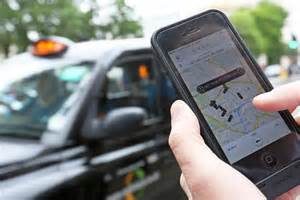 The traditional ways we commute are changing as technology changes. The American Public Transportation Association released a new study this spring: Shared Mobility and the Transformation of Public Transit. Results of the study indicate that ride-share services, like Uber and Lyft, actually complement bus and rail systems by making connections after hours or to outlying areas.
The traditional ways we commute are changing as technology changes. The American Public Transportation Association released a new study this spring: Shared Mobility and the Transformation of Public Transit. Results of the study indicate that ride-share services, like Uber and Lyft, actually complement bus and rail systems by making connections after hours or to outlying areas.
[divider type=”clear”]
Here are some key findings and a summary of recommendations:
- KEY FINDING 1 – Supersharers – people who routinely use several shared modes, such as bike sharing, car sharing (e.g. car2go or Zipcar), and ride sourcing (e.g. Lyft or Uber) – save the most money and own half as many household cars as people who use public transit alone.
- KEY FINDING 2 – Shared modes complement public transit, enhancing urban mobility. Ride sourcing services are most frequently used for social trips between 10pm and 4am, times when public transit runs infrequently or is not available. As a result, Shared modes substitute more for automobile trips than public transit trips.
- KEY FINDING 3 – Shared modes will continue to grow in significance, and public entities should engage with them to ensure that benefits are widely and equitably shared. Public transit agencies should seize opportunities to improve urban mobility for all users through collaboration and public-private partnerships, including greater integration of service, information and payment methods.
- KEY FINDING 4 – The public sector and private mobility operators are eager to collaborate to improve paratransit using emerging approaches and technology. While a number of regulatory and institutional hurdles complicate partnerships in this area, technology and business models from the shared mobility industry can help drive down costs, increase service availability and improve rider experience.
RECOMMENDATIONS This report concludes by presenting recommended actions that public entities-public transit agencies, transportation departments, and other local and regional agencies-can take to promote useful cooperation between public and private mobility providers. It also suggests regulatory enhancements, institutional realignments, and forms of public-private engagement that would allow innovation to flourish while still providing mobility as safely, broadly, and equitably as possible.

